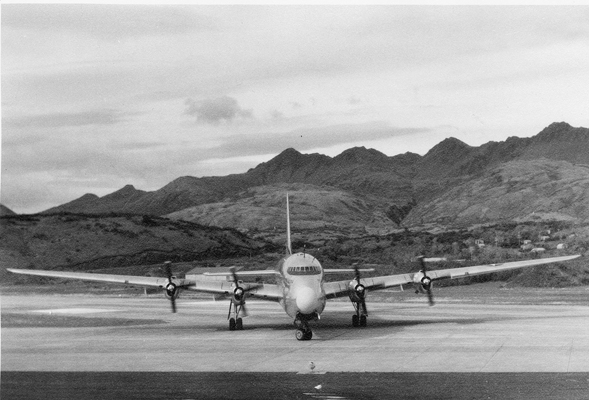Juan Trippe Of Pan Am, The US Navy, and The Lockheed Constitution – November 23, 2018

The Airlines…..The Pilots…..The Unions – November 9, 2018
November 10, 2018
Another Forgotten Airline – November 30, 2018
December 1, 2018RN3DB
November 23, 2018
Good Morning,
Today I want to introduce you to an airplane that Pan Am thought would give them an edge on transatlantic service; however, there were only two of the Lockheed Constitution made and the concept was dropped by Pan Am. A unique airplane for it’s time but the Boeing Stratocruiser, a derivative of the B-29, won out and the rest is history.
Enjoy…..
The Lockheed XR6O-1 Constitution
The Lockheed XR6O-1 Constitution was a joint development of the Lockheed Company, the United States Navy, and Pan American Airways. The Navy’s interest in the aircraft stemmed from the type’s potential to carry a large amount of military cargo overseas. Pan Am envisioned utilization of the aircraft as a commercial airliner.
The XR6O-1 was a good sized airplane. It measured 156 feet in length and had a wingspan of 189 feet. With a wing area of 3,610 square feet, the mammoth bird featured a maximum take-off weight of 184,000 lbs with an empty weight of 160,000 lbs. In the commercial airliner role, the aircraft had the capacity to carry 168 passengers.
The Constitution was originally powered by a quartet of Pratt and Whitney R-4360-187 radial engines rated at 3,000 horespower each. However, early flight tests revealed that the aircraft was underpowered. As a result, the original powerplants were replaced with Pratt and Whitney R-4360-22 radials rated at 3,500 horsepower each.
The XR6O-1 had a maximum range in excess of 4,600 NM and a service ceiling of 28,600 feet. Cruise speed and maximum speed were 260 mph and 303 mph, respectively. Due to its large size and weight, the aircraft had a climb rate of only 700 feet per minute.
Only a pair of XR6O-1 Constitution aircraft were built and flown by Lockheed. Ship No. 1 received Bureau Number 85163 while that of Ship No. 2 was 85164. The fuselage of these aircraft was essentially a double cylinder with a cross-sectional shape that resembled a figure eight. This design was chosen to increase the type’s volumetric efficiency.
XR6O-1, Ship No. 1, made its first flight on Saturday, 09 November 1946. The aircraft took-off from Burbank, California destined for Muroc Army Airfield in the Mojave Desert. The flight to the remote experimental flight test base was entirely nominal and the aircraft landed uneventfully. Ship No. 2 later joined it stablemate in June of 1948
History records that the XR6O-1 was only of marginal use to the Navy. While both aircraft made numerous transcontinental and transoceanic flights, they were underpowered and failed to satisfy performance requirements. As a result, Pan Am’s plans to employ the Constitution as an airliner failed to materialize.
The Navy retired both XR6O-1 aircraft in 1953 after unsuccessfully trying to entice commercial airline companies to purchase them. Not to be deterred, Lockheed later tried to sell industry on several airliner concepts that were essentially a repackaging of the Constitution’s basic design. No soap.
Neither XR6O-1 aircraft exists today as both ended up in the scrap yard. However, the difficult lessons-learned in their design and operation were later used to produce more capable aircraft such as the Lockheed C-130 Hercules, C-141 Starlifter, and ultimately the colossal C-5 Galaxy.
Interestingly, the Lockheed XR6O-1 Constitution remains the largest fixed-wing aircraft ever operated by the United States Navy.
Enjoy the videos below on the Constitution, and the Stratocruiser, have a good weekend, and keep family and friends close.
Robert Novell
November 23, 2018



